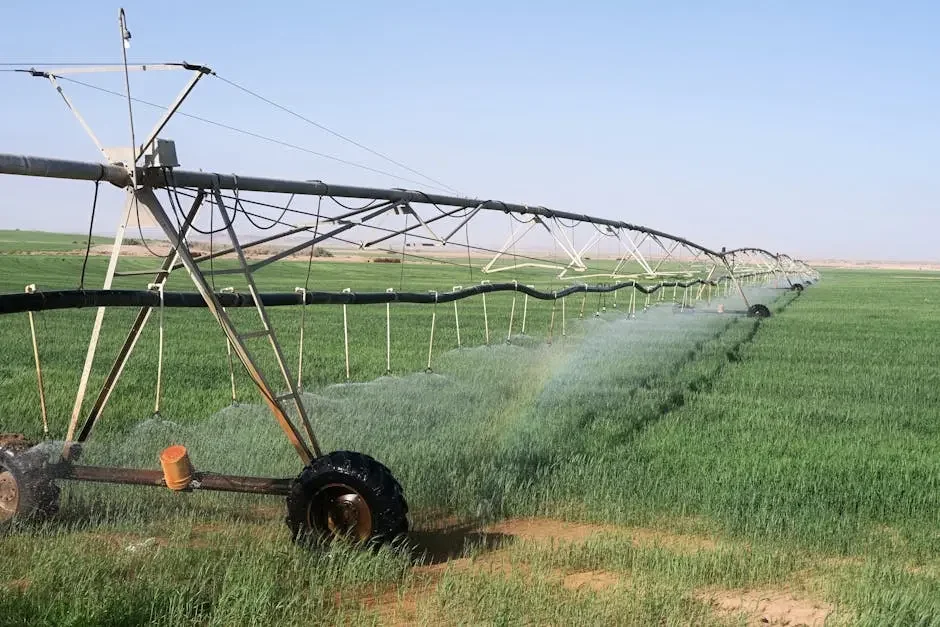What Is the Role of Subsurface Drains in Irrigation Systems?
In the world of agriculture, effective irrigation systems are crucial for healthy crop production. But what happens when there's too much water? Enter subsurface drains. These systems play a vital role in managing excess moisture in the soil, ensuring crops have the optimal growing conditions they need. If you've ever wondered what exactly subsurface drains do or how they fit into irrigation systems, you're in the right place. Let's dive into the details.
Understanding Subsurface Drains
Subsurface drains are installed below the soil surface to manage excess water, helping maintain the right level of soil moisture. They work by redirecting water away from the root zones of plants, preventing waterlogging and promoting healthier growth.
The concept of subsurface drainage is not new—it dates back to ancient farming techniques that employed clay tiles to direct water away from fields. Modern methods have evolved significantly with technology, allowing for more precise water management.
A major advantage of employing subsurface drains is their ability to enhance the growth environment for crops by maintaining optimal moisture levels in the soil. This not only ensures healthier plants but also contributes to increased agricultural yields.
How Do Subsurface Drains Function?
These drains typically consist of perforated pipes buried beneath the soil. As excess water percolates through the soil, it enters these pipes and is carried away from the field. This process helps maintain the water table at a desirable level, protecting crops from too much moisture.
In regions where heavy rainfall is common, subsurface drains play an even more critical role. They are designed to facilitate the rapid movement of excess water to prevent waterlogged conditions that can drown plant roots. Their efficacy in such scenarios underscores their importance in robust irrigation management.
Moreover, these systems are a silent partner in irrigation solutions. While they function out of sight, the improvements they bring to crop health are often visible. Efficient drainage provided by subsurface pipelines means that plants have the air and nutrition they need in an adequately moist environment.
Benefits of Using Subsurface Drains
Some of the key benefits include improved soil structure, reduced surface runoff, prevention of salinity build-up, and safeguarding crops against diseases associated with excessive moisture.
In addition to improved soil health, subsurface drains can also enhance soil fertility. By preventing waterlogged conditions, they allow for better root penetration and nutrient uptake by plants, leading to more robust growth.
Moreover, subsurface drainage can have a beneficial impact on the environment. By reducing the amount of surface runoff, these systems help prevent topsoil erosion, protecting valuable farmland and reducing sedimentation in nearby waterways.
Common Scenarios for Implementing Subsurface Drains
Subsurface drains are particularly useful in areas with high rainfall or on farms with poorly draining soils. They are also beneficial in regions where salinity is a concern, as they help manage salt levels in the soil.
In addition to these situations, farmers dealing with uneven or sloped terrains often find subsurface drainage systems indispensable. They make it possible to farm even the most challenging fields efficiently, ensuring that no area is left too wet or too dry.
These drainage systems can be a game-changer in arid regions with periodic heavy rains, as they prevent the occasional rainstorm from turning fields into temporary swamps.
Considerations for Effective Drainage System Installation
Proper installation is key to ensuring the success of subsurface drains. Factors such as soil type, slope, and climate must be considered to create an efficient drainage system that meets the unique needs of each farm.
Expert consultation is often recommended when setting up these systems. Professionals can offer insight into the ideal depth for pipes and the best materials to use, ensuring both effectiveness and longevity of the drainage system.
Maintenance is another vital aspect of subsurface drainage systems. Regular checks and balances, such as ensuring no blockages in the drainage pipes, can maintain peak functionality and extend the life of the system.
The Essential Role of Subsurface Drains in Agriculture
Subsurface drains are essential for maintaining the delicate balance of moisture necessary for healthy crops. By effectively removing excess water, they prevent problems like waterlogging and salinity, ultimately supporting robust agricultural productivity. Understanding their role and benefits can help farmers make informed decisions about their irrigation systems, ensuring optimal growing conditions for their fields. To discover more about how you can optimize your irrigation systems, explore our homepage.

